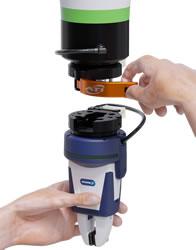How Implementing Robotics Affects Business Insurance
.jpg)
Robotics can bring many advantages to the companies that implement them, but their expense remains a divisive factor. High upfront costs cause many businesses to remain hesitant about robotics, but these initial expenses only tell part of the story. Robots’ impact on business insurance is often overlooked and under-considered.
Insurance can generate high costs, with general liability alone costing businesses a median of $500 a year. If robots can reduce premiums and claims, it would make a strong argument in their favor. Alternatively, some companies may be unwilling to implement them if they will incur extra insurance costs.
Here’s a closer look at how implementing robotics can affect business insurance, both positively and negatively.
Reduced Workers’ Comp Claims
Perhaps the most significant advantage of robotics in insurance is its potential to reduce workers’ compensation payouts. Robots in industrial settings typically save workers from repetitive strain and other injuries by automating dangerous tasks. Less risk of injury translates into less risk of a Workers’ Comp claim.
Workers’ Comp claims cost $41,003 on average, based on data from 2017 to 2018. As such, preventing just a few injuries a year could potentially save businesses hundreds of thousands of dollars. Organizations can achieve these savings by automating the highest-risk tasks, making robotics a helpful cost reduction tool.
One thing to consider in this area is that this strategy only works when robots prevent more injuries than they cause. Generally speaking, robots make workplaces safer, but they could introduce collision or caught-between hazards. Companies must work to implement robots safely to achieve their full savings potential.
Complicated Coverage Areas
One potential downside of robotics on business insurance is that they can create complex coverage considerations. The insurance industry hasn’t quite caught up with robotics adoption yet, making it unclear what type of coverage applies to robots. This uncertainty could lead to over-purchasing or under-purchasing insurance or making businesses hesitant to implement robotics.
Different use cases and nuances could place robots into various coverage areas, making it challenging to find the right provider. Property insurance is the most straightforward answer to what type of coverage a robot needs, but internet-connected models may also need cyber insurance. If you manufacture robots, error and omissions insurance may be necessary to mitigate legal damages if a product malfunctions.
Thankfully, this problem is becoming less of an issue as robots gain prominence. More insurers are offering niche coverage areas, some covering 700 risk classes or more, so robot-specific insurance may soon be a reality.
Potential Future Changes
As robotics adoption continues to rise, the insurance industry will likely adapt. Since robots make many workplaces safer, some insurers may offer discounts to more automated facilities. You may be able to lower your insurance premiums by incorporating robotics into your workflows.
The National Institute for Occupational Safety and Health (NIOSH) has invested $1.5 million into researching how robots could improve worker safety. The involvement of such an authority could be what insurance companies need to push them to favor robotics in their pricing plans.
As issues of insurance and robotics become more prominent, authorities will work out who is legally responsible for incidents involving robots. Clarification over coverage areas and who needs to purchase what insurance will follow. As these shifts take place, both robotics manufacturers and adopters should pay attention to adapt to any changes.
Robots and Insurance Have a Complicated Relationship
As they stand right now, robots’ relationship with business insurance is uncertain. On the one hand, they can make workplaces safer and, thus, reduce Workers’ Comp payments. On the other, insuring the robots themselves can be a complicated, unclear process, potentially incurring higher costs than necessary.
Robot insurance will become more straightforward as these machines play more significant roles in society. Until then, companies should carefully consider how robots could either reduce or raise their insurance costs.
Comments (0)
This post does not have any comments. Be the first to leave a comment below.
Featured Product

